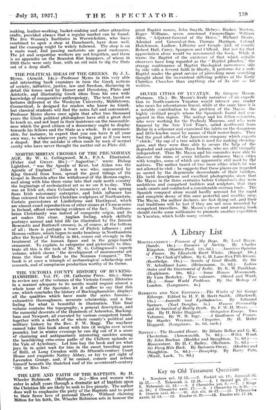SILVER CITIES OF yUCATAN. By Gregory Mason. (Putnam. 15s.)--Mr. Mason's
lively narrative of an expedi- tion to North-eastern 'Yucatan would interest any reader who cares for adventurous travel, while at the sada. time it is a notable contribution to the problem of the ;Mayas -the highly civilized people whom the Spaniards found and con- quered in this region. The author and his fellow-scientists, who were working for the Peabody Museum, and who were financed by the New York Times, sailed northward from Belize in a schooner and examined the inletS on the dangerous and little-knotvn coast by means of then' motor-boats. They had the good offices of the American company which exports " chicle," the sap of a tree which is used for making chewing- gum, and- they were thus able to secure the help of the degraded and suspicious Maya Indians, who are still virtually independent. Thus Mr. Mason and his comrades were able to discover the ruins of seven hitherto unknown Maya citiea with temples, some of which are apparently still used by thd natives, The author heard of two more cities which lie was not allowed to visit ; he suggests that these places are regarded as sacred by the degenerate descendants of their builders. His lucid descriptions and excellent photographs show that the Mayas in the three centuries before Columbus's day were ambitious and competent builders and sculptors, that they made canals and conducted a considerable oversea trade. The
Spanish conquest alone would hardly account for the rapid and complete decay of this once powerful and wealthy race:
The Mayas, the author declares, are fast dying out, and their real traditions will be lost if they are not soon recorded by Competent travellers. Mr. Mason's clever and amusing book should excite some millionaire to promote another expedition to Yucatan, which holds many secrets.






















































 Previous page
Previous page